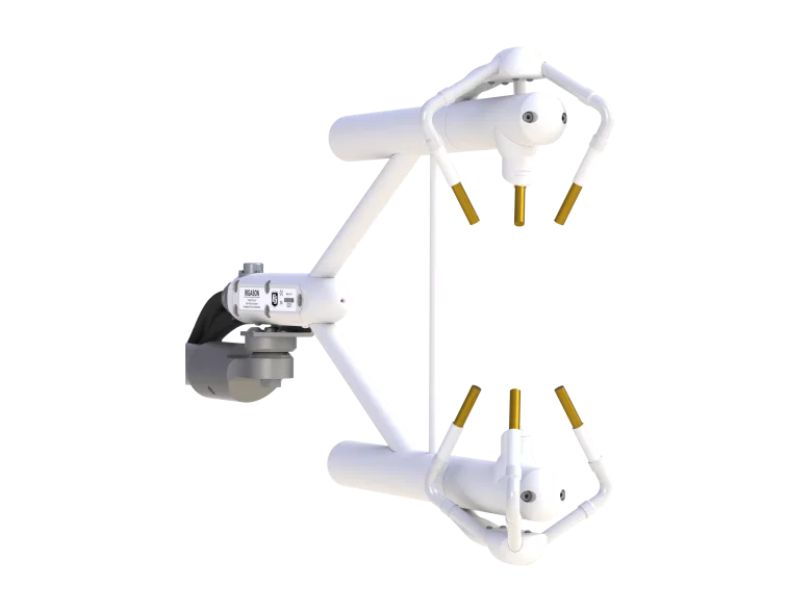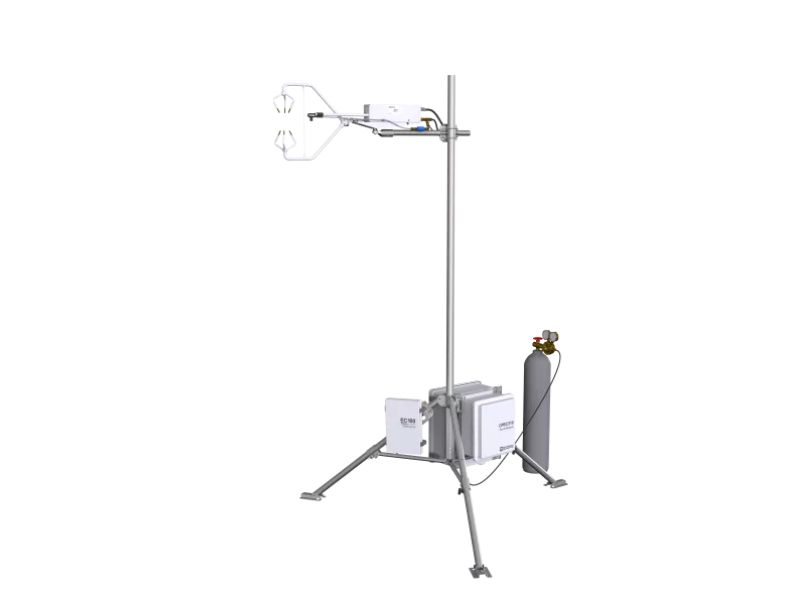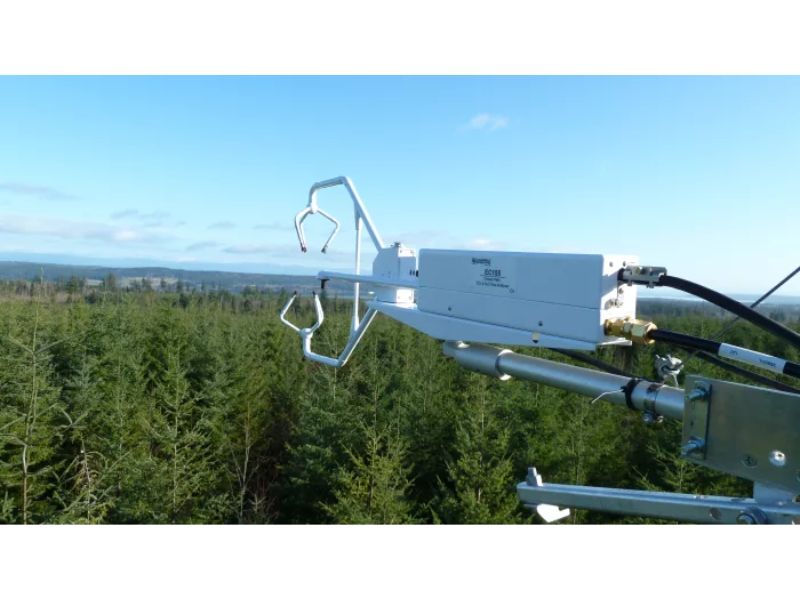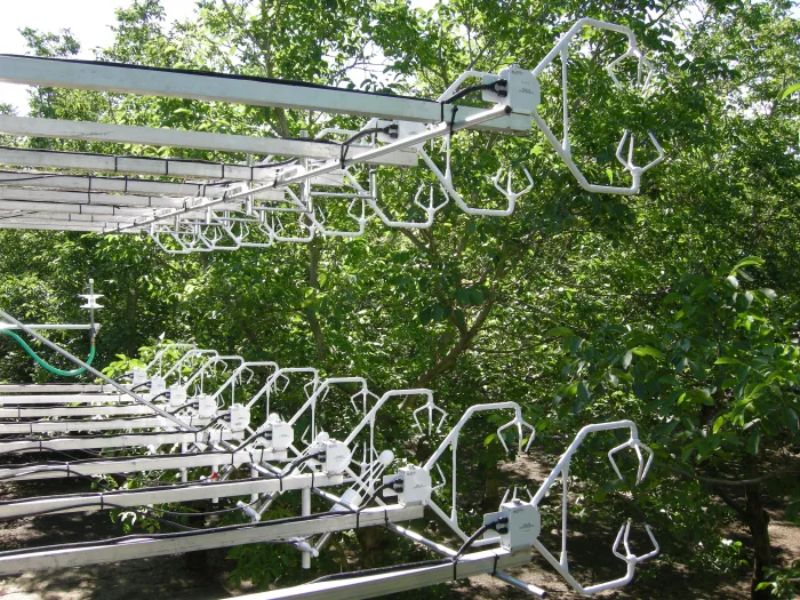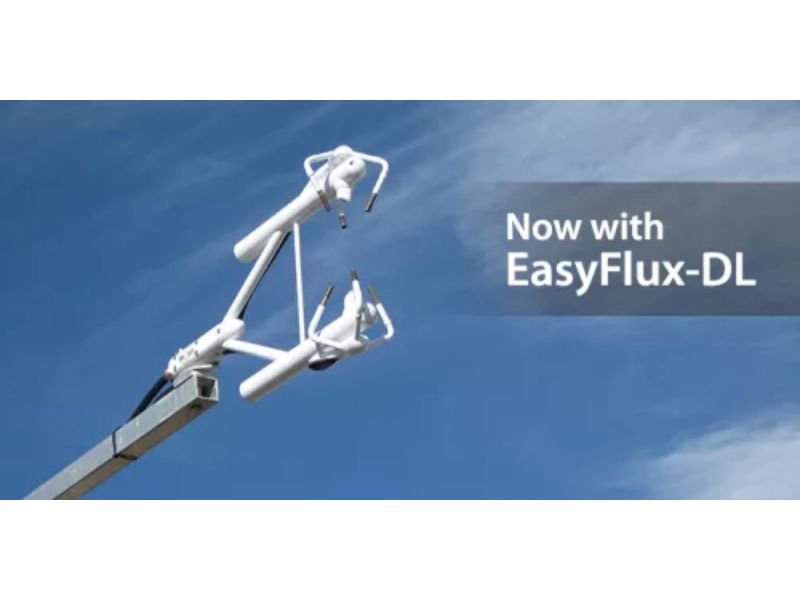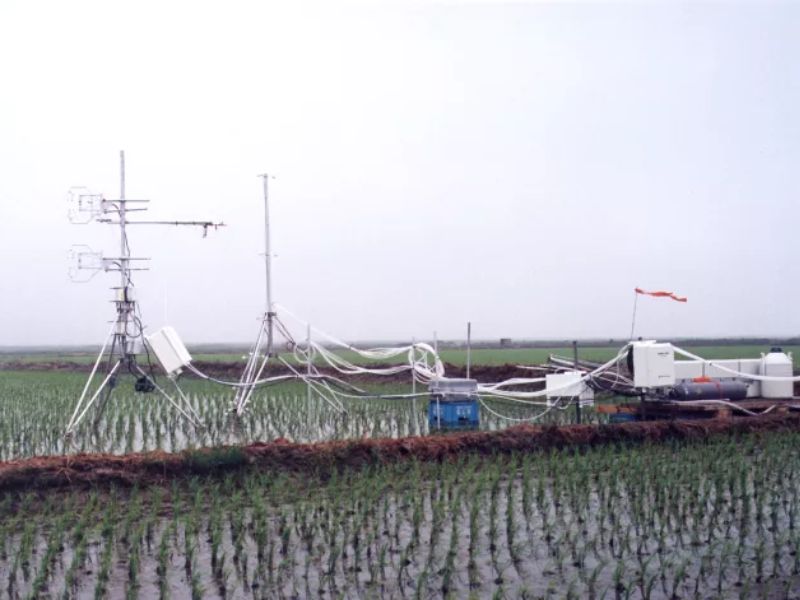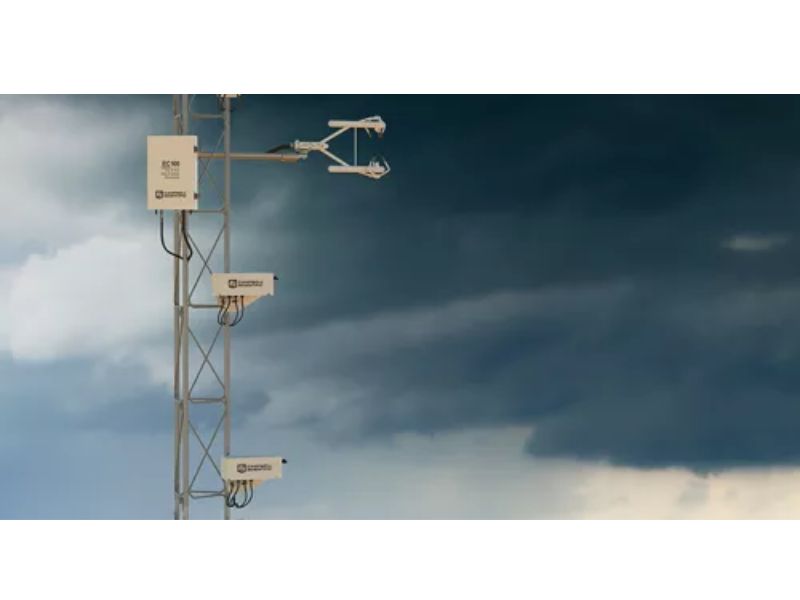Water flux systems are designed to measure H2O exchange between the biosphere and atmosphere in the surface layer of the atmosphere. These measurements are crucial when actual evapotranspiration measurements are desired rather than an estimate derived from environmental conditions. Campbell Scientific is the only company to manufacture both the gas analyzer and sonic anemometer needed for the eddy-covariance technique, helping to ensure the highest-quality data. Combined with the EasyFlux® series of programs and software, the system offers a complete solution with a simplified user experience.
Product
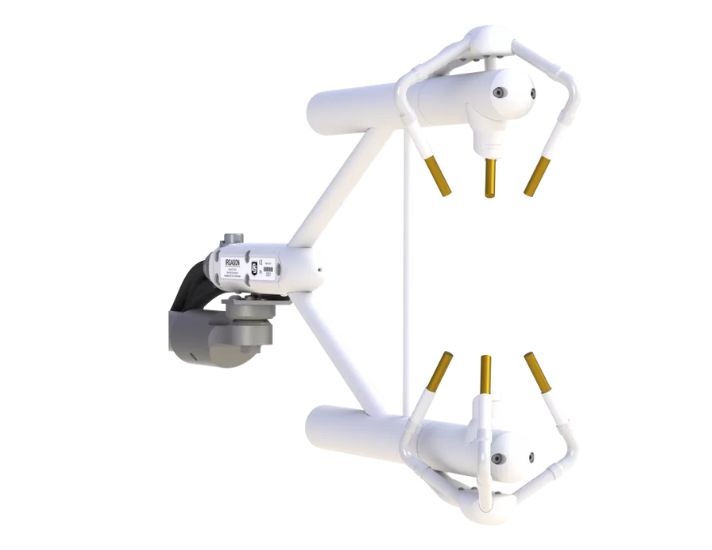
IRGASON – Integrated CO2 and H2O Open-Path Gas Analyzer and 3-D Sonic Anemometer
Campbell Scientific’s IRGASON® fully integrates the open-path analyzer and sonic anemometer. Designed specifically for eddy-covariance carbon and water flux measurements, the patented design is easier to install and use than separate sensors and provides increased measurement accuracy. The IRGASON simultaneously measures absolute carbon dioxide and water vapor, air temperature, barometric pressure, three-dimensional wind speed, and sonic air temperature. U.S. patent D680455

CPEC310 Expandable Closed-Path Eddy-Covariance System with EC155, Pump Module, and Automatic Zero and Span
The CPEC310 with EasyFlux® is a turn-key, closed-path eddy-covariance (EC) flux system for long-term monitoring of atmospheric-biosphere exchanges of carbon dioxide, water vapor, heat, and momentum. A complete system consists of a closed-path gas analyzer (EC155 closed-path gas analyzer), sonic anemometer (CSAT3A sonic anemometer), data logger (CR6 datalogger), sample pump, three-valve module that enables automatic zero and CO2 span measurements (manual H2O span), and accommodations for a CDM-A116 analog input expansion module allowing for additional sensors.
The gas analyzer’s patented vortex intake design (United States Patent No. 9,217,692) and small sample cell volume (5.9 mL) provide a much lower flow rate than other closed-path systems while maintaining excellent frequency response (4.3 Hz cutoff frequency). Additionally, this design makes the system virtually maintenance free while still maintaining an ideal frequency response compared to traditional inline filters. Lower flow allows the CPEC310 to have one of the lowest total system power requirements (12 W) of any closed-path eddy covariance system. Campbell Scientific manufactures all components of the CPEC310, including the data logger and EasyFlux® DL software for computing and correcting fluxes, which gives our system the most reliable functionality.
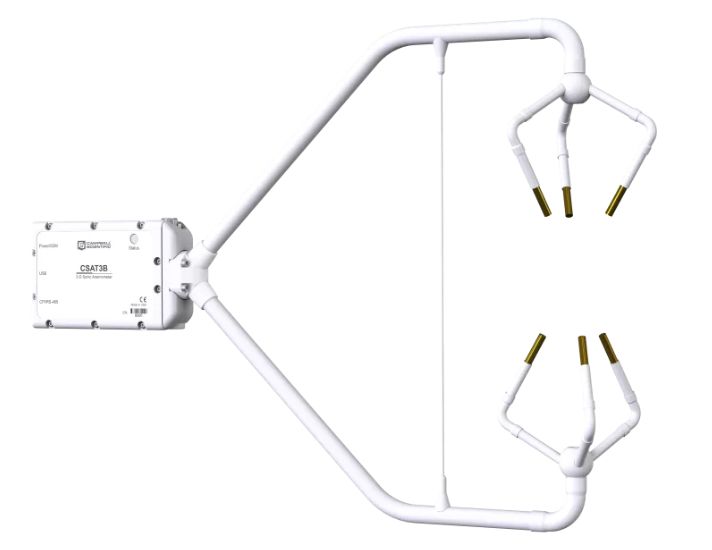
CSAT3B 3-D Sonic Anemometer with Integrated Electronics
Campbell Scientific’s CSAT3B 3-D Sonic Anemometer is an update and replacement to the original CSAT3, and remains the 3-D sonic anemometer of choice for eddy-covariance measurements. It has an aerodynamic design, a 10 cm vertical measurement path, operates in a pulsed acoustic mode, and withstands exposure to harsh weather conditions. Three orthogonal wind components (ux, uy, uz) and the sonic temperature (Ts) are measured and output at a maximum rate of 100 Hz.
Measurements can be triggered from three sources:
-
- Data logger SDM command
- Data logger CPI command
- CSAT3B internal clock
The SDM and CPI protocols both support mechanisms for synchronizing multiple CSAT3Bs.
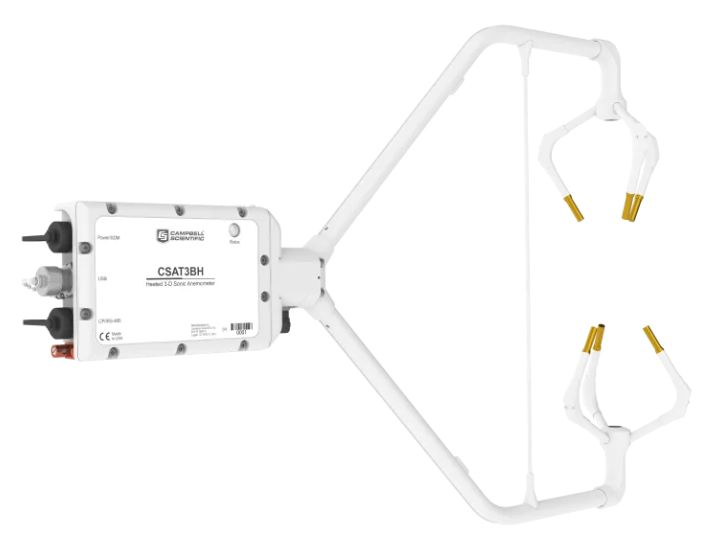
CSAT3BH Heated, 3-D Sonic Anemometer with Integrated Electronics
The CSAT3BH is ideal for stations that are deployed in cold climates. The easy-to-use CSAT3BH sonic anemometer features smart heating that delivers just the right amount of heat to keep the instrument free of ice and snow, enabling continuous and reliable measurements in cold environments. The CSAT3BH is designed to prevent ice accumulation on the sensor, avoiding prolonged periods of data loss.
The CSAT3BH features variable power, only delivering power when needed—as opposed to the common method of providing two-way heating (on/off). Moreover, there are real-time data flags when the heaters are turned on, which is crucial to post-processing your data files.
The CSAT3BH is a heated version of the CSAT3B 3-D Sonic Anemometer with Integrated Electronics. The specifications of the CSAT3BH are the same as the CSAT3B with regard to wind measurements.
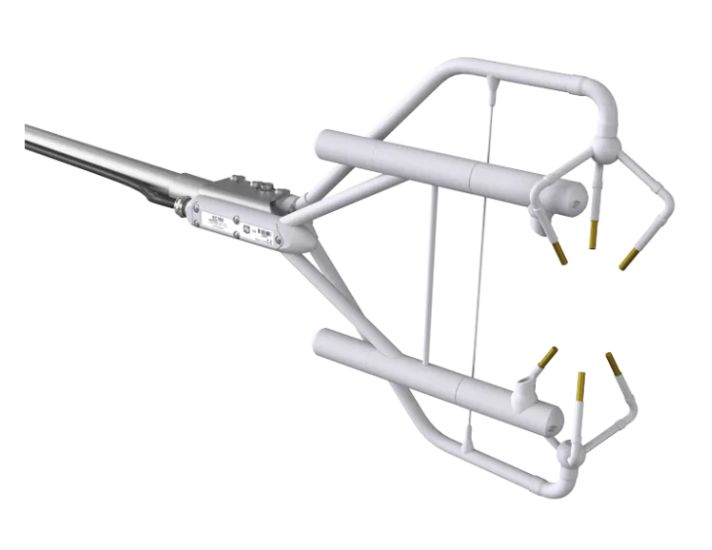
EC150 CO2/H2O Open-Path Gas Analyzer
Campbell Scientific’s EC150 is an open-path analyzer specifically designed for eddy-covariance carbon and water flux measurements. As a stand-alone analyzer, it simultaneously measures absolute carbon-dioxide and water-vapor densities, air temperature, and barometric pressure. With the optional CSAT3A sonic anemometer head, three-dimensional wind speed and sonic air temperature are measured.
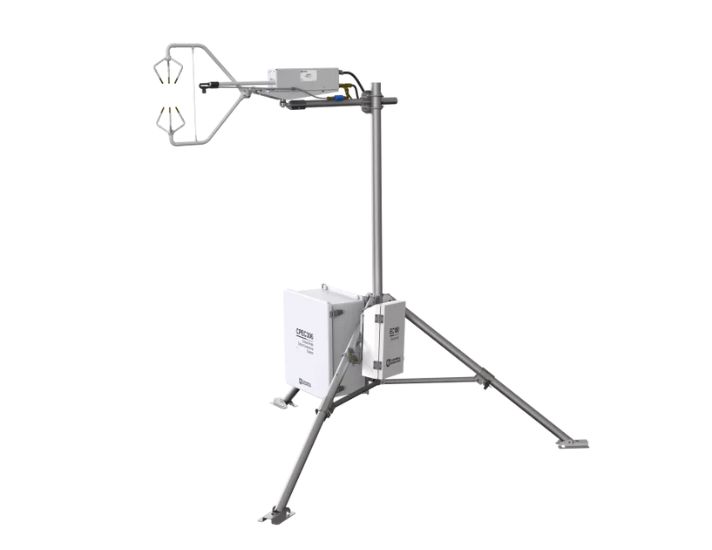
CPEC306 Expandable Closed-Path Eddy-Covariance System with EC155 and Pump Module
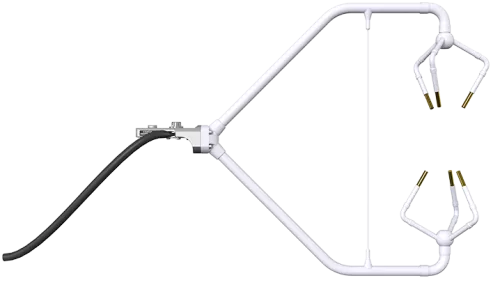
CSAT3A 3-D Sonic Anemometer
-
- Data logger’s SDM command
- EC100’s internal clock
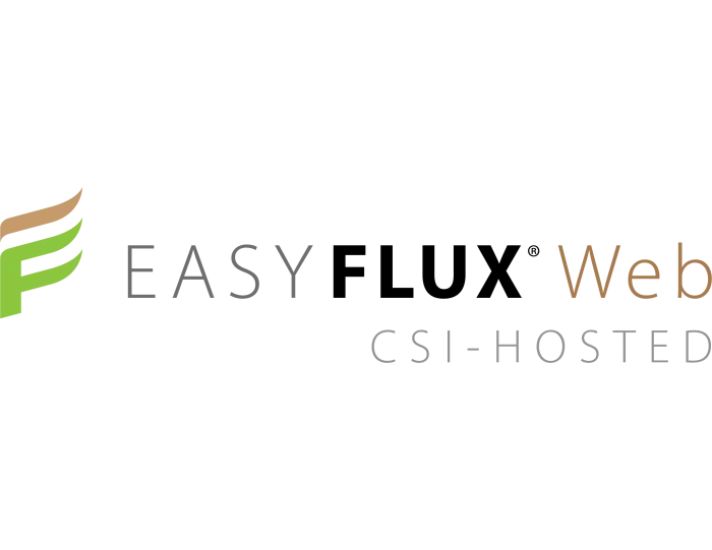
EasyFlux WebH Software
EasyFlux® Web CSI-Hosted is a web-based software tool for monitoring any Campbell Scientific data-logger-based system. EasyFlux Web CSI-Hosted is hosted on Campbell Scientific's own Microsoft Azure server, which allows for automatic updates and maintenance of the software. After users create an account, they are given their own IP address to allow them to easily connect to their data from an Internet-connected device. Monitoring a network of data loggers is made easy with real-time data monitoring, customizable alerts, and data download capabilities. EasyFlux Web is compatible with all Campbell Scientific data-logger-based systems, including flux, weather, and soil stations.
Updates in Version 2.01
The updated EasyFlux Web 2.01 includes new benefits and features to enhance the user experience. EasyFlux Web 2.01 now provides the ability to monitor live video cameras.

EasyFlux WebS Software
Current Version: 2.01
EasyFlux® Web Self-Hosted is a web-based software tool for monitoring any Campbell Scientific data-logger-based system, including data loggers running EasyFlux® DL. EasyFlux® Web Self-Hosted is a user-installed version of EasyFlux® Web that allows users the ability to install on their own server and control updates of the software themselves. Monitoring a network of Campbell Scientific data-logger-based systems is made easy with real-time data monitoring, customizable alerts, and data download capabilities. EasyFlux® Web is compatible with all Campbell Scientific data-logger-based stations.
Updates in Version 2.01
The updated EasyFlux® Web 2.01 includes new benefits and features to enhance the user experience. EasyFlux® Web 2.01 now provides the ability to monitor live video cameras.

EasyFlux DL Eddy-Covariance Datalogger Program
EasyFlux® DL is a free CRBasic program that enables a data logger to report fully corrected fluxes of CO2, latent heat (H2O), sensible heat, and momentum from a Campbell Scientific open-path and closed-path eddy-covariance (EC) system. Final fluxes are processed from raw high frequency time series data by applying commonly used corrections found in scientific literature.
In the past, Campbell Scientific's data logger EC programs roughly estimated fluxes, and PC post-processing software was used to fully correct the flux measurements. Now with the EasyFlux® DL program, fully corrected fluxes are processed by the data logger and reported at the end of each EC averaging interval.
EasyFlux® DL has been tested at several stations in various environments, including irrigated alfalfa, grassland, maize, open water, forest, and desert. The results have shown good agreement with fluxes processed using traditional PC-based software applications.

EasyFlux PC Eddy-Covariance Post-Processing PC Software
EasyFlux® PC is a free computer program that processes high frequency time series data, collected using a Campbell Scientific eddy-covariance flux system, into fluxes following community accepted practices. Fully corrected fluxes of CO2, latent heat (H2O), sensible heat, and momentum are available in generic, AmeriFlux, and GHG-Europe ASCII formats.
Overview
To assess the various water flux systems available to you and ultimately determine which system is the most suitable, you should first identify your application’s needs and requirements. If necessary, review any related documentation, permits, or regulations. Your familiarity with these items will help ensure that the system you select will meet your compliance requirements.
Note: The considerations discussed here do not constitute an all-inclusive list but serve to provide common considerations that have been helpful to our customers in guiding them through the selection process.
Requirement Priorities
Measurement-related priorities can be crucial to selecting the appropriate equipment.
| Eddy-covariance approach | Determine whether you require an open-path or closed-path approach.
|
| Colocated measurements | If an open-path approach is chosen, determine whether measurements of wind speed and scalar gas need to be colocated.
|
- For water flux measurements, Campbell Scientific offers open-path sensors, such as the IRGASON® (Integrated CO2 and H2O Open-Path Gas Analyzer and 3-D Sonic Anemometer) or the EC150 (CO2/H2O Open-Path Gas Analyzer) with the CSAT3A (3-D Sonic Anemometer).
- For water flux measurements requiring a separate gas analyzer and sonic anemometer, Campbell Scientific offers the CSAT3A 3-D Sonic Anemometer and the EC150 CO2/H2O Open-Path Gas Analyzer.
Site Inaccessibility
| Power requirements | To provide continuous monitoring, you will need a power supply that is sized to meet the total power requirements of all the components of your water flux system.
|
| Maintenance | As with any high-performance equipment, some level of maintenance (cleaning, calibration, and replacement) of the various water flux components is routinely required. Review the recommended calibration and maintenance frequency of your system components so you can create a maintenance budget in terms of employee resources, travel time for site visits, and equipment costs. Determine which maintenance tasks can be handled onsite, such as with a field calibration tool, and which require equipment to be sent to the manufacturer. If downtime without data is not acceptable, have sufficient replacement parts (such as batteries) and backup equipment on hand. |
| Communications |
If it is important for you to collect and view your data without having to visit your site, investigate the telemetry options available to you. If wireless transmission is available, you can use a telemetry peripheral to transmit your water flux data remotely. The following are some possible telecommunication options:
Each telecommunication option has its own requirements that should be reviewed. For example, review the transmission distance or area of each option, as well as its applicable service requirements. You may find that a particular option is not available or does not provide the coverage you need. |

